Leon’s Diary – September 1944 to December 1944
Italy – Chasing Germans
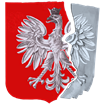
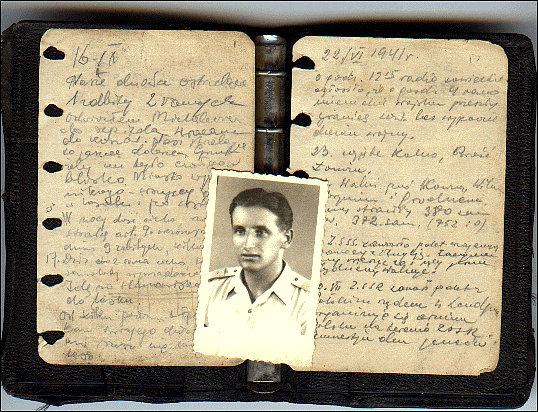
The Katyn Diary of Leon Gladun survived numerous encounters with death, both German and Russian. It chronicles battles in several campaigns and records the writer's travels through many countries on four continents. Though Leon died in 1973, the material in his diary is being used as evidence by the Commission for the Investigation of Crimes against the Polish Nation, in Warsaw. (Photo of Leon taken in Palestine).
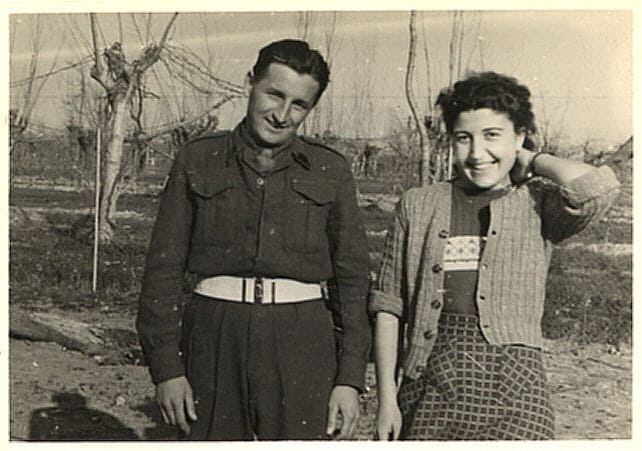
Anna and Leon
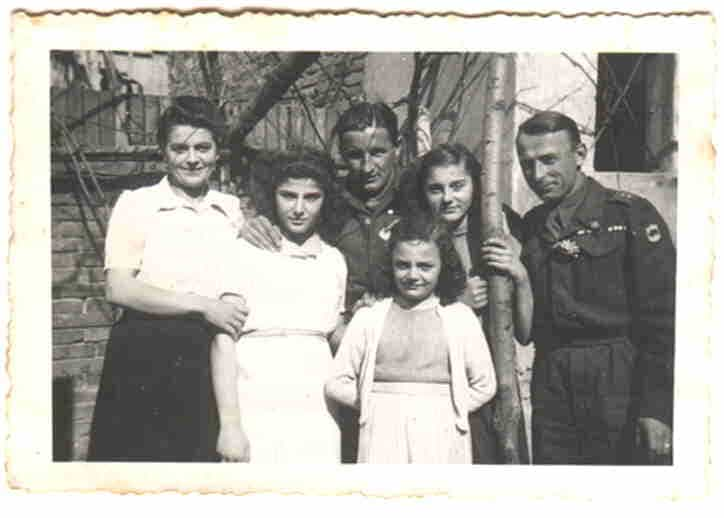
Anna's family: Leon (center) taught himself fluent Italian and loved Italian culture

Poles at The Colosseum: Leon (left) and fellow-Poles enjoy the sights after the fall of Rome.
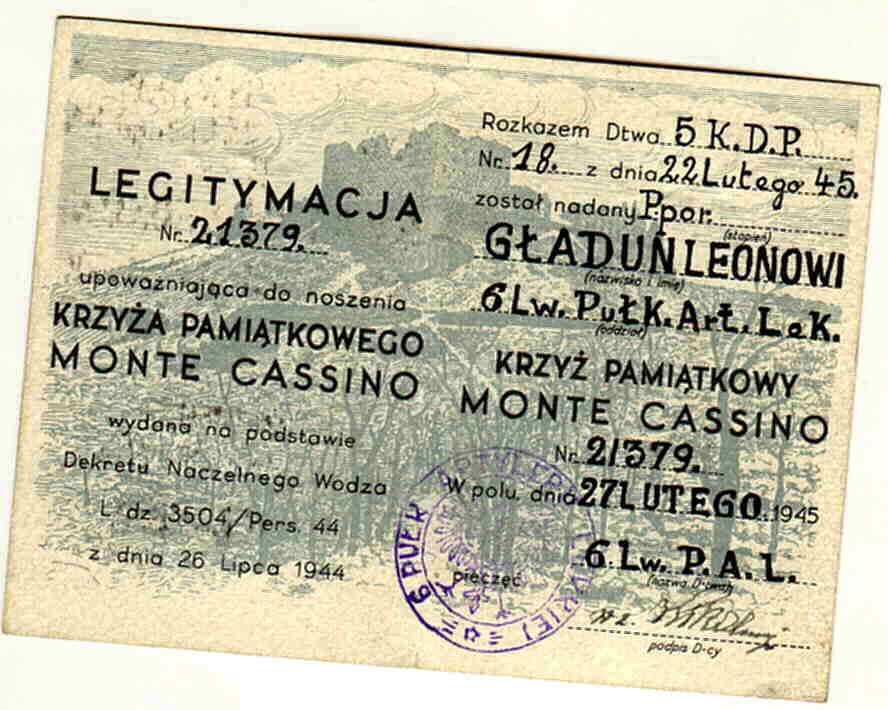
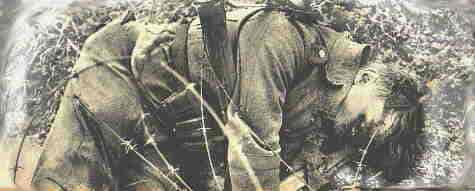
Anna
September 18 – Visit the cities of Perugia and Asissi.
September 25 – [In Anna’s handwriting.]
To My Leon:
My thoughts go out to you every moment.
Now and during the days of my sadness.
I will be so desolate without you.
In the golden sunset I will always
remember you. And I still love you. Anna, Cassino 25.9.44.
September 27 – I stop off with Jurek at Cassino where we spent two days. Anna is moving to Rome where her father works for the railway. I’ve discovered that the girl has gotten plump. If it keeps going it could be disastrous as she wasn’t too skinny to start off with. And what will happen when the food improves when she put on weight during such poverty? It’s damn inconvenient that her family still live under the same roof–what can a poor guy do? Maybe there’ll be another chance to go to Rome which might be more convenient. After returning from Rome Jurek and I spent a few more days at Cassette d’Ete.
October 2 – Off to a sector past Viserba near the city of Rimini. It rained the whole time. We’re stationed near the sea but you couldn’t go swimming as guards would immediately show up. We didn’t shoot much–just some harassing fire and once with covering smoke. A barrage was being planned but it ended at the preparation stage and we never made it to H-hour.
October 8 – Suddenly an order came during the night that we were to move back to our old position. At 18:00 hours we returned to our previous quarters. It turned out that only the artillery of our A.P. and from PAL [light artillery regiment] were in action–the rest stayed in place.
October 10 – Many theories circulate as to our immediate future: some say we’re going to a middle sector of the front, others maintain we’re off for our winter quarters. Today came the news that those bound for winter quarters are to leave tomorrow. It seems that we will yet go. Hopefully to
a somewhat more conducive area where I might be able to converse and practice my Italian because it’s difficult to communicate here in the local dialect and besides there’s not much to talk about. After all I can’t go around constantly repeating “lavoware” and “maneiare” etc. Jurek is off for a course near Naples. He’ll be trained as an instructor and won’t be coming back.
Between the British and the Americans
October 13 – At 04:00 we leave Cassette. We are indeed bound for a sector in the middle of the front between Eighth Army and Fifth Army. We sleep near Assisi. Arrived at a place called Autria near the city of Arezzo. We wait here for two days for further orders.
October 16 – We move on further. This last section of the route crosses the mountains–several miles of serpentine road at a height of 1600 meters. A beautiful way and what’s most important is that it’s covered with spruce trees just like in the Karpaty mountains.
October 16 – The village of S.Pieri in Bagno. Our quarters are under tents in a field. We await the freeing of our future positions that are now occupied by the Germans somewhere near Mt. Sofia. If the offensive goes as planned, in a couple of days we’ll occupy our new position. So far in this section are 5 Brigade, 4 PAL 7 pak. Other than that it rains a lot and the nights are cool. A rough job in pulling vehicles out of the mud.
October 17 – At 17:00 hours we set for our position in the
region of Sta Sofia. The road was serpentine and quite steep. We arrived in the dark and setting up was very difficult–constantly the vehicles got stuck in the mud and we had to pull them out. One good thing: a house for PD [command post]. We stayed here for several days without firing a shot.
October 19 – Change position near the village of Galleata not too far from Sta Sofia. Our battery position is very interesting: high on a mountain overlooking the entire valley. The view is spectacular. All the regiments and batteries are below us. During the shooting one could well observe the firing of individual batteries. The Germans concentrated their fire on the town several times–for us it was just a spectacle observed from high up. During the night several shells fell near us but there was no damage. Our battery is separated from the next by over 100 meters. We fired a relatively large amount from this position. There were several offensives planned which we partially fulfilled. We had a spectacular overview of the whole valley during the artillery exchanges. At times the barrages went off like machine-gun fire: flashes, smoke, noise exploding in series all over the valley and slopes!
October 28 – New position further north at Sta Marina. Interesting only in that it’s near a church and a cemetery. I had my P.D. on a wagon just two meters from the church door. At first it seemed that we wouldn’t be shooting from here but it turned out that we did and quite heavily. I was on duty during All Saint’s Day and I was firing right in the middle of church services. During shooting, one of our cannon exploded as a result of a bad lock. Pieces landed just meters from the church door but there were no casualties. On our last day here snow fell–the first this year.
25th New Position in a Row
November 10 – Predappio Nuovo (380 meters). Our 25th new position in a row. On this occasion we celebrate with a little drinking in the divisional PD. We were stationed here for quite a while.
November 24 – We fired a last shell just for propaganda. Was this a rear guard action or a vacation? We really aren’t sure what it was. In any case it was a waste of time as there wasn’t anywhere we could take off to. Next we returned to our previous position where Gun Group B was. Our battery was stationed at a school some 6 kilometers from our unit. Doing nothing we thus waited almost till the holidays and we were anticipating spending them here.
December 20 – We set off to a new sector and not on the vacation which we were hoping for. Night march. from Predappio Alto for Brigishella. Spend the night near Brisighella and next day drive to a position nearby.
December 23 – Position near the village of Brigishella. Not a good site as it turns out: bad roads, only two houses and, as everyone warns, the Germans are covering the roads and area with fire. And it turns that we actually are one of the most shelled areas in the region. Starting at dusk of Christmas Eve we received quite a bit of fire. Continuous shooting through the nigh–torment from medium and heavy caliber artillery. Often the cannons of SP.
A Black Day…
December 26 – A black day in the history of our division. At 12:00 during dinner time several shells fell near PD of 6-th Battery. The first one killed was Lance Sergeant Gorecki while Corporal Dyrod and Corporal Szecura were wounded.
Christopher Jacek Gladun was born in 1951 and grew up in Canada to where his family emigrated from England as displaced persons. Sadly, Chris died in Toronto in March 2003. He held a diploma in Journalism from the Niagara College and a BA in Polish Language & Literature from the University of Toronto. Chris also acted as interviewer and researcher for the documentary film “Rescued From Death in Siberia”.
This content is now maintained by the Kresy-Siberia Group, which Chris was a charter member of and which is taking his website and his research work forward.